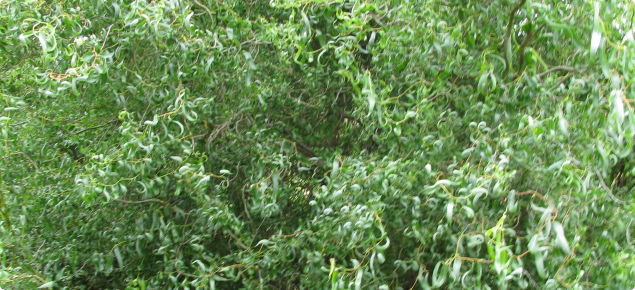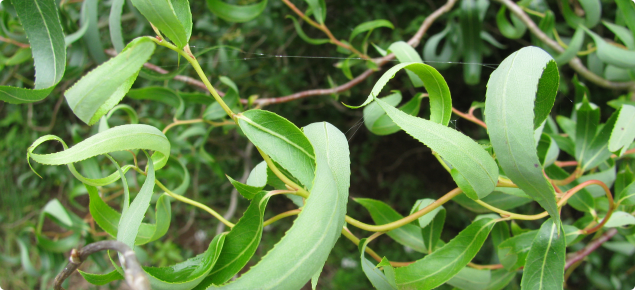Salix species including Salix alba; S. cinerea; S. chilensis; S. matsudana; S. viminalis, and all other species and hybrids except S. babylonica, S. x calodendron, and S. x reichardtii have been prioritised at a national level as Weeds of National Significance (WoNS).
Appearance
All willows form large dense shallow root masses.
Leaves: The leaves of most species are long and narrow with fine toothed margins. Salix cinerea (Grey Sallow or Pussy Willow) has broader, shorter leaves than the rest.
Flowers: The flowers of willows are unisexual and group together in what is called a catkin, with male catkins and female catkins usually formed on separate plants.
Seeds: The small seeds develop quickly inside a capsule. Each seed has long silky hairs at one end which aids in the wind dispersal of the seed once the capsule opens. The seeds are short lived and normally don't live longer than 10 days.
Agricultural and economic impact
Environmental weeds. Weeds of waterways, riparian vegetation, lake edges, billabongs, swamps and wetlands in wetter temperate regions.
Declared pest category
The Western Australian Organism List (WAOL) contains information on the area(s) in which this pest is declared and the control and keeping categories to which it has been assigned in Western Australia (WA). Search for willows in the WAOL using the scientific name Salix.
Search > detect > report
| MyPestGuide™ Reporter | Pest and Disease Information Service (PaDIS) |
Control method
When using any agricultural chemicals please ensure that you always follow instructions on the label and any permit. Users of agricultural chemical products must always strictly comply with the directions on the label and the conditions of any permit.
Only registered products can be used for weed and pest control.
Control methods for this declared plant can be found in the National Willows Management Guide - Section 3 Controlling and removing willows.


